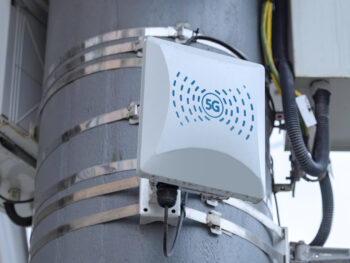If you've ever wandered through a town you might have noticed tiny cell towers for 5G on the poles of street lights. They look like little boxes, but they're actually broadcasting wireless signals from cell phone providers to your phone.
The smaller ones are being replaced by the larger, purpose-built cell towers. While they're not as noticeable however, they could cause problems for people.
The of the FCC's Radiation Exposure Thresholds
The FCC's Radiation Exposure Thresholds establish the safe limit at which a person can be exposed to electromagnetic energy generated by wireless devices. The limits for exposure are based on research that show that RF energy can cause harm to health.
do cell towers emit radiation (SAR) is an indicator of the amount of radiofrequency energy absorption by tissues. It's usually 1.6 Watts per kilogram averaged over one gram of tissue.
However, because 5g transmits at higher frequencies this could be able to cause greater energy intensity on the skin and other exposed body areas. This could result in many possible harms, such as an increase in formation of skin disorders such as dermatitis, skin cancer and cataracts.
Because of the potentially negative effects of 5G radiation, PSU has chosen to set a general localized power density limit of 4 mW/cm2 measured across 1 centimeter, and not exceeding 30 minutes for all 5G services at 3000 GHz. This limit for localization is in line with the peak SAR that is spatially averaged at 1.6 W/kg, which is averaged over 1 g of tissue at 6 GHz.
The FCC's Maximum Exposure Thresholds
If you've ever operated a cell phone, then you're aware that a safe range from the tower is around 400 meters. This is due to the power of the transmission of the cell tower is significantly increased the further away your location from the tower.
While this sounds like something that's good but the truth is that people who live close to towers might be more vulnerable to health problems. For example, a study from 2014 in India found that residents living within 50 meters from cell towers suffered much more health problems than those who were away from the antennas.

This study found that people who moved to areas further away from cell towers noticed their symptoms return to normal within a few days. Another study has demonstrated that exposure to extreme amounts of electromagnetic field radiofrequency (EMFs) could cause brain tumors, cancers and other health issues.

This is because RF radiation, which is utilized in wireless communications, may be absorbed by the body's outer layer of skin. This is important to understand because the skin acts as a protective barrier against injury to the body, infection caused by pathogenic microorganisms and entry of toxic substances. It is also the largest organ of the human body and is responsible for protecting other organs.
The FCC's Minimum Exposure Thresholds
The FCC's Minimum Exposition Thresholds depend on numerous assumptions that aren't supported by evidence from science. They include the false belief that short-term exposures to RF radiation are safe because of the minimal penetration into the body (i.e., tissue heating).
This assumption does not take into account the deeper penetration of the ELF components of modulated RF signals and the consequences on the body of short bursts generated by RF waves that are pulsed. These assumptions are not in line with current understanding of the biological consequences of RF radiation. As such they should not be used for health protective exposure guidelines.
In addition there is the fact that both ICNIRP and FCC are limiting their radiation limits for local peak SARs that are based on the maximum frequency of absorption (psSAR), which can be described as not a sufficient dosimetric tool to assess the amount of radiation exposure. Particularly it is inconclusive when frequencies exceed 6 GHz. In addition, psSAR is not been tested for RF radiation exposed to other environmental agents such as sunlight. In the event of interactions, RF radiations with different environmental agents may result in antagonistic or synergistic impacts. This would result in an increased risk of adverse health adverse effects. For example, co-exposure to RF radiation with sunlight may increase the risk of developing skin cancer, and may also exacerbate other skin disorders, such as acne.
